Wow, now this is engagement. Are you watching, cultural organizations? Feel that?
And if you’re sitting there wondering what all that was even about:
No genre is the new genre

The next time I'm annoyed with the world, I'm going to try and remember to stop what I'm doing and watch this video. And if I'm still annoyed, I'm going to take a page from John Cage and listen to it again. Just a couple from Iowa (married for 62 years!) having a little fun with music, a little fun with life. The first video is reportedly of an impromptu performance in a waiting area at the Mayo Clinic. This follow-up report is a more formal presentation featuring the same awesome … [Read More...]
Filed Under: Uncategorized Tagged With: happy, joy, love, music
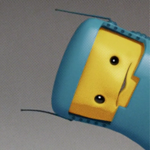
Kinda what I think of when I think about creativity. [via] … [Read More...]
Filed Under: Uncategorized
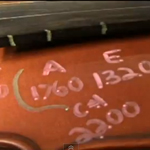
I was lucky enough to have some great teachers growing up, but Vi Hart (mathemusician!) takes the cake (again). What is up with Noises? (The Science and Mathematics of Sound, Frequency, and Pitch) Now then, when is recess? [via] … [Read More...]
Filed Under: Uncategorized Tagged With: frequency, noise, pitch, sound

Colin Holter posed a question in his post this morning on NewMusicBox that I'd like to consider here as well: We can agree that it is thought that the patrons of classical music in the United States are old and getting older. That’s the conventional wisdom. So let me ask you this: Have you ever read a piece of serious writing on the attitudes of the elderly toward classical music? If, as is often assumed, the over-70 crowd exerts a powerful influence over the institutions that deliver … [Read More...]
Filed Under: Uncategorized

I was a late convert to the e-reader. Yet once I got going, its 24/7 ready-access to the world of literature at the click of a button made me an easy candidate for seduction. Lately, however, I have been getting lost in the Amazon Kindle Store, the victim of too many choices shelved on a flat virtual table with no personal "you're going to love this one!" identification system yet worked out for myself. (I have never been a kindred spirit of the NYTimes bestseller list readers, and my … [Read More...]
Filed Under: Uncategorized
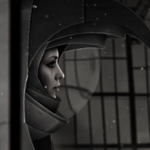
There will be some actual content from me later in the week, but meanwhile I'll let Jan Swafford write the new music jokes and handle the analysis. Plus! Something beautiful I just saw on the internet: [via] … [Read More...]
Filed Under: Uncategorized
Wow, now this is engagement. Are you watching, cultural organizations? Feel that?
And if you’re sitting there wondering what all that was even about:

So, after my last “technology is changing my life and I might want to get off this ride” S.O.S. post, I’ve been thinking a lot about what I’m truly anxious about in 2010.
When everything is available, what is special (and how on earth are you supposed to find it)?
We’re drowning in a sea of choice, and though we learn daily how to more effectively deal with our new reality, it’s still often a source of significant stress and anxiety. How can we even begin to discover things to love and admire when wading through this much stuff? I find myself perversely shutting down to new experiences as more and more of them present themselves.
Everything is forever and yet nothing is forever.
In our digital lives, there are no magazines to recycle when all the articles are online and no music collections to move when it’s all in the clouds, yet servers fail and things disappear, sometimes with witnesses to sound the alarm, sometimes without comment or explanation. Though I have letters from middle school, every email I sent before 2005 no longer exists.
Keeping up with how technology is changing our lives feels like a marathon I am about to lose.
As technology increases the pace of our lives, will a backlash come? I can’t help but imagine a coming trend in which a group of people very consciously makes the decision to unplug themselves from this culture of constant digital sharing. There will be stories about these people deleting all their social networking accounts and turning in their smart phones. People will praise and disparage them with a shocking intensity that reflects their own personal struggles with these changing social paradigms.
I am a *music* *journalist*.
Sometimes I feel like I’m standing with a foot on the deck of two different sinking ships. Right now pretty much any venture that counted on selling copies to pay the bills looks like a toppled game of Jenga. As we begin 2010, we remain in a period of redefinition and recalibration, but we seem to be getting a better handle every day on how to develop even as problems and their solutions continue to morph and change before our eyes. The fun, if we’re optimistic and flexible about it, is in figuring out how to restack these blocks into a relatively stable form: distilling things down to what is essential about these pursuits, and coming to terms with what is merely disposable (and dated) window dressing–the superficial, if comforting, shells that we continue to cling to at our peril.
UPDATE: The future, or the journalism part at least, solved! Classical music, however, seems destined for a bumpy ride.
NPR’s four-minute analysis of two current chart toppers suggests that they are so much of everything that their net effect is nothing–nothing but cash, anyway.
‘Avatar’ And Ke$ha: A Denominator In Common? by Neda Ulaby and Zoe Chace
A sample of their findings:
The lyrics mean nothing; the song is about nothing. Even the bridge of “Tik Tok” sounds like a bridge that’s making fun of a bridge.
Speaking of good things on TV, check out this eight-minute short written and directed by Neil Gaiman and staring Bill Nighy and Amanda Palmer. There’s not a word of dialog, which is just fine because it leaves lots of room for Sxip Shirey’s charming score. (Yes, that Sxip.)
 Happy 2010, everyone! Hope you all enjoyed a fabulous holiday.
Happy 2010, everyone! Hope you all enjoyed a fabulous holiday.
Just on the cusp of the new year, a friend sent me this article about a couple who was seriously taking it back to the land. They lived without running water in a yurt in Alaska. (Wi-fi, however, was deemed an essential resource). Some people found the whole idea incredibly annoying, but it stuck with me solely for the reminder that life–to varying degrees, depending on your circumstances–can be the adventure you’re brave enough to create for yourself. I’m no resolution maker, but I wondered if I was doing a good job in that department. I fantasized about yurt life for 48 hours, though I confess that I would vote for the water and ditch the internet, if it came down to it. My friend laughed and said that was silly–my head would surely explode if I was unplugged from my email for any serious length of time. I worried she was right.
Though I see how I may be blowing this out of proportion historically, as we blast into 2010, do you consider/worry about how communications technology is shaping your life as things move from novelty to status quo? After a day of endless emails and the writing of small ideas and the consumption of 200 blog posts, I can’t help but roughly tally up the time/mental drain and think about how that same chunk may have been applied to other ends. What is happening to my brain and my output? Is this much information a stimulant or a mind-numbing distraction? Do I want to go further down this rabbit hole, or retreat to the dark (or at least non-pixelated) ages before anything like interactive TV watching touches my life?
My thinking was further poked at (and somewhat steadied) by Michael Agger’s evenhanded consideration of the ideas in Jaron Lanier’s new book You Are Not A Gadget. The review read like a call to not freak out and run backwards, but take a second and reflect on where exactly we’re going with all these magical toys (and what they may take from us) as we move forward. We can blow an hour of the day absorbing the mix and mash, but what have we gained and how much has it truly cost us? I, for one, feel like I could use a time out, though I’m honestly not sure if getting off the ride to re-evaluate would do anything but leave me in the dust.
UPDATE: Feeling more optimistic.
So, I know I got a little “Bah! Humbug!”-y on the ol’ Christmas tunes last week. I admit that memories of suburban shopping frenzies and endless cocktail parties have turned me a bit dark when it comes to the holiday classics. But the internet being, well, the internet, a few gems turned up to make me change my (yes, I’m going there) tune. (The holiday punch helped also.)
First, the talented and adorable Pomplamoose bring us this warm and fuzzy (and non-denominational!! and good cause $$ generating!!) tune “Always in the Season.”
The real ear-opening experience, however–aside from the Christmas song about the hippopotamus (?!?!) at least–came with Ted Hearne’s arrangement of “Have Yourself a Merry Little Christmas.” Somehow, I must not have been paying close enough attention these past 30 years. It took Ted’s arresting sonic manipulations to rouse me from my sugar-induced cookie stupor and wake me up to what this song was actually supposed to be about. When you’re ready to leave behind the saccharinely sanitized “let your heart be light” lyrical rewrite, go and listen to Ted’s take on the original version here.
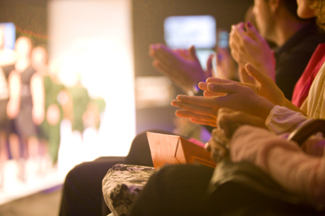 If the NEA’s 2008 Survey of Public Participation in the Arts and the roundtable discussion that accompanied its release last week are the kind of thing that floats your boat, I tossed my two cents into that pond here.
If the NEA’s 2008 Survey of Public Participation in the Arts and the roundtable discussion that accompanied its release last week are the kind of thing that floats your boat, I tossed my two cents into that pond here.
Aside from the clear need for a reassessment of the parameters we use when surveying American adults about their arts experiences (i.e. what counts as art in these times of dissolving definitions/genre hierarchies), the big, future-looking question the survey left me with was this: With all we have seen in the evolution of communications technology, is it possible that a trend of cultural participation will actually be seen and strengthened as audiences transition from a position of passive consumption to one of active and engaged parallel creation?
 Last night there was some seriously joyous (if wordless) caroling here in Baltimore.
Last night there was some seriously joyous (if wordless) caroling here in Baltimore.
Then, on waking late to grey and drizzly skies, the latke-making got the kibosh put on it in favor of some simple eggs and toast (interestingly the New York Times‘ “oatmeal buttermilk blueberry pancake” recipe was running a brisk distribution as the “most emailed article”. Guess we were all looking for some form of cozy Sunday morning comfort). A little while later, however, we did get into the non-denominational seasonal spirit with a little cookie baking (I swear even my hair now smells of chocolate). This was accompanied by the obligatory downloading/endless looping of Vince Guaraldi’s soundtrack to A Charlie Brown Christmas.
Which led me back tonight to Drew’s challenge to lay out the best and worst in holiday music. I hate to be a Scrooge about it, but as I was musing earlier, aural memories can carry a lot of buried information, and for me these familiar refrains conjure mostly shopping malls and stress.
More than anything, however, the ten basic tunes of carolers everywhere call to mind those endless holiday party quartet gigs we played for gas money in high school. These interminable events effectively stamped out any joy the music may have once inspired in me. Every medley had a “Hark the Herald Angels Sing” transition and a stinger of false excitement for an ending. From time to time, a guest enjoying some serious holiday cheer would hand me her glass and request a refill. I don’t blame her. “Jingle Bells,” played in ten different international “styles,” would inspire anyone to indulge in extra eggnog.
So I don’t know about you, but while I find a lot of joy in the season–in old traditions and in new–it’s not usually a classic holiday song that triggers a desire to deck the halls.
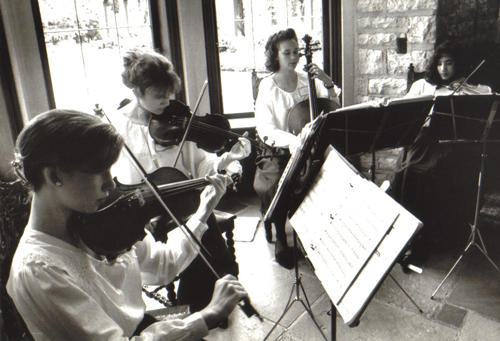
 After watching this video for Flypt, an iPhone app that let’s users remix music using some basic effects, I got to thinking again about the new ways these and other programs are bringing musical creativity into people’s lives. No, it’s not necessarily the equivalent of learning to play the cello, but it’s flexing muscles in people that I assume most music professionals appreciate seeing toned. Doesn’t the future of music seem brighter when playing music isn’t simply turning on the radio but actually thinking about the process of making sound? In some ways, it seems like a return the engagement experienced when lots of people played an instrument “a little” to meet family/community demands, but with the added bonus that professional music is also all around us.
After watching this video for Flypt, an iPhone app that let’s users remix music using some basic effects, I got to thinking again about the new ways these and other programs are bringing musical creativity into people’s lives. No, it’s not necessarily the equivalent of learning to play the cello, but it’s flexing muscles in people that I assume most music professionals appreciate seeing toned. Doesn’t the future of music seem brighter when playing music isn’t simply turning on the radio but actually thinking about the process of making sound? In some ways, it seems like a return the engagement experienced when lots of people played an instrument “a little” to meet family/community demands, but with the added bonus that professional music is also all around us.
It also brought to mind once again Lessig’s book (and our conversation on MTG) covering the role of remixing in contemporary culture. From simple linking to complete overhauls of message, the way we are digesting information and trading ideas is exploding off the screen. I admit I worry it’s all flying at me so fast that I’m missing a great deal of the actual content and only catching 25% of any particular thought. Is my mind truly benefiting or is it slowly crawling deeper and deeper into a hole due to idea shell shock? Maybe perpetual stimulation is not to be feared, but adjusting to this kind of high-speed collective processing is exhausting (good thing I didn’t go to Oberlin, then, I guess). In the end, I know I’m jumping the gun, because we’re still playing with these new tools/toys–twisting and pulling on them to see not just what new technologies can do, but what we can do and become alongside them. Maybe that process will never end, but how profoundly will it end up altering the way we think about, well, everything?
UPDATE: Information Overload: Americans Consume 34 GB of Data Daily
There’s been quite a bit of chatter out there in response to Brian Eno’s assertion in Prospect magazine that “the idea that something is uncool because it’s old or foreign has left the collective consciousness.” Is he out of touch with reality or is he the indisputable cool person saying we are all cool now?
Oh, wait, wait, no. Not all. Seems classical music didn’t jump onto this train to popularity:
There are just too many styles around, and they keep mutating too fast to assume that kind of dominance. As an example, go into a record shop and look at the dividers used to separate music into different categories. There used to be about a dozen: rock, jazz, ethnic, and so on. Now there are almost as many dividers as there are records, and they keep proliferating. The category I had a hand in starting–ambient music–has split into a host of subcategories called things like “black ambient,” “ambient dub,” “ambient industrial,” “organic ambient” and 20 others last time I looked. A similar bifurcation has been happening in every other living musical genre (except for “classical” which remains, so far, simply “classical”)
Ah, if only he knew of our nomenclature headaches! But seriously, whether he thinks classical missed the boat to this party or not, if Eno’s core idea is mixed with a bit of Long Tail theory (death of the mainstream combines with the benefits of digital distribution) it seems to suggest that while new opportunities may not be as deep, the pool is now much, much wider. While your shot at a spot in the Philharmonic’s clarinet section may have shrunk, you now have a chance at realizing your previously too far fetched dream of forming a successful bagpipe band.
Or at least I hoped that was where we might be headed. Then the realities of making money in the digital age smacked me on the forehead. Ouch.
an ArtsJournal blog
